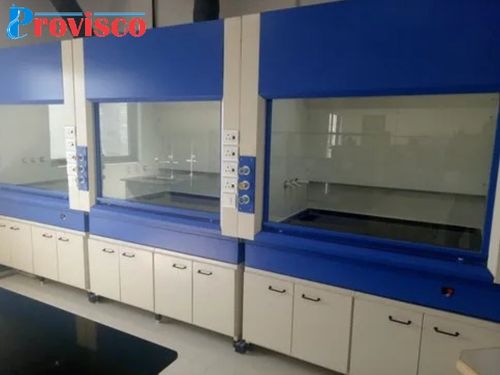Fume hoods have long been essential components in laboratory environments around the globe, protecting researchers and maintaining an ideal working environment for experiments. Fume hood manufacturers play an invaluable role in both research and laboratory safety; we will explore this aspect further here.
Introduction
Laboratories are hubs of scientific discovery and innovation. In any laboratory – pharmaceutical, chemical or biological – researchers need to be safe while protecting experiments without interruption from harmful chemicals, fumes or explosions. Fume hoods or safety cabinets serve an integral part in this effort by acting as the initial line of defense from these dangers and are essential in keeping experiments intact and on schedule.
Click here, Get more information about the website: https://www.proviscotech.com/fume-hoods-ms-ss/
Fume Hoods in Research
Why Are Fume Hoods Necessary?
Fume hoods are designed to contain and exhaust hazardous materials safely out of laboratory environments, providing a controlled space for chemical procedures while decreasing exposure risks and avoiding contamination risks.
Different Types of Fume Hoods Available Now
There are various kinds of fume hoods, from ducted and ductless models, biological safety cabinets and laminar flow hoods, each serving its own specific function in laboratories. Selecting one that best meets their requirements is paramount.
Understanding Fume Hood Manufacturers’ Function
Fume hood manufacturers play an essential part in laboratory safety. Not only are these containment devices necessary for operations but their manufacturers play a central role in assuring compliance and safeguarding lab environments.
Ensuring Safety and Compliance in Manufacturing Facilities
Manufacturers follow stringent safety regulations when crafting fume hoods to meet industry standards and guaranteeing laboratory personnel’s wellbeing and the success of experiments. Compliance is vitally important.
Fume hood manufacturers provide customization and design options tailored specifically for laboratories’ individual requirements, to make certain experiments easier for researchers and ensure they have all of the tools available at hand for success.
Quality Standards in Fume Hood Manufacturing
Material Selection
Selecting high-quality materials when manufacturing fume hoods is critical. Manufacturers must choose materials which can withstand corrosion resistance as well as chemicals found within fume hood environments for long term effectiveness and lasting success of these essential safety systems.
Ventilation Systems
Fume hood manufacturers also engineer efficient ventilation systems to effectively extract toxic fumes from laboratories while creating an ideal atmosphere inside of them. Proper ventilation ensures safe conditions within any laboratory environment.
Innovations in Fume Hood Manufacturing
Fume hood manufacturers continuously innovate to enhance safety, energy efficiency, and usability for their hoods.
Energy Efficiency at its Best Modern fume hoods have been designed to be energy-efficient, cutting back costs while upholding optimal safety levels.
Smart and Digital Features
Manufacturers now incorporate digital technology and smart features, enabling researchers to remotely manage fume hoods for enhanced user experience and safety.
Selecting an Appropriate Fume Hood Manufacturer
Factors to Keep in Mind When selecting a fume hood manufacturer, laboratory managers and researchers must take several factors into consideration, including reputation, compliance with safety standards, customization options available and cost effectiveness.
Real-World Examples pertaining to collaborations between laboratories and fume hood manufacturers provide invaluable lessons on making an appropriate selection.
Implications on Research and Laboratory Safety
Real-Life Scenarios
Fume hood quality and manufacturer choice has an enormous effect on research outcomes as well as researchers’ safety. Poorly constructed or installed hoods may lead to accidents, contamination and compromised results – with disastrous repercussions for researchers themselves and for research outcomes as a whole.
Conclusion
In scientific research, fume hood manufacturers play an unsung yet critical role. Their role extends well beyond production; it includes design, customization and innovation – guaranteeing laboratories worldwide can conduct experiments safely.
FAQs
1. What are the primary uses for fume hoods in laboratories?
Fume hoods serve an important purpose: providing researchers with a controlled environment in which to conduct experiments involving hazardous materials without risk of exposure or contamination.
2. How are fume hood manufacturers assuring safety and compliance?
Fume hood manufacturers adhere to rigorous safety measures and regulations when developing fume hoods that meet industry standards for optimal performance, guaranteeing their product meets industry compliance while remaining both safe and compliant with compliance measures.
3. What role do ventilation systems play in fume hoods?
Ventilation systems in fume hoods play a pivotal role in extracting toxic fumes and maintaining an unsafe laboratory environment.



